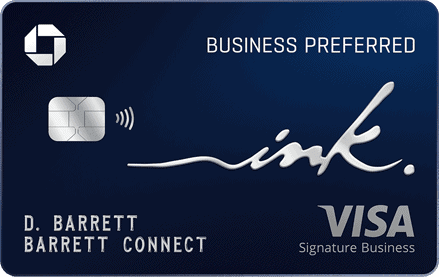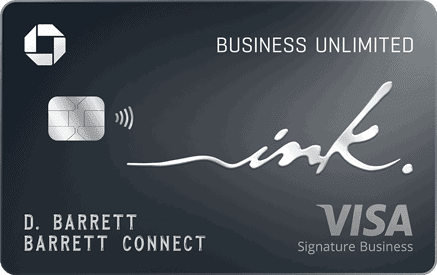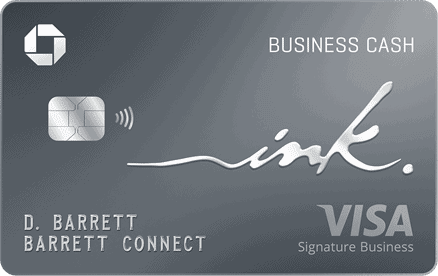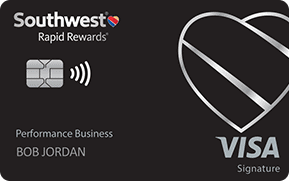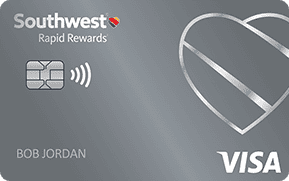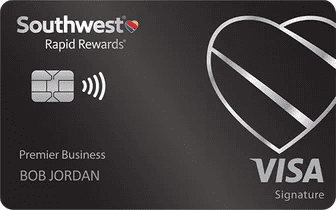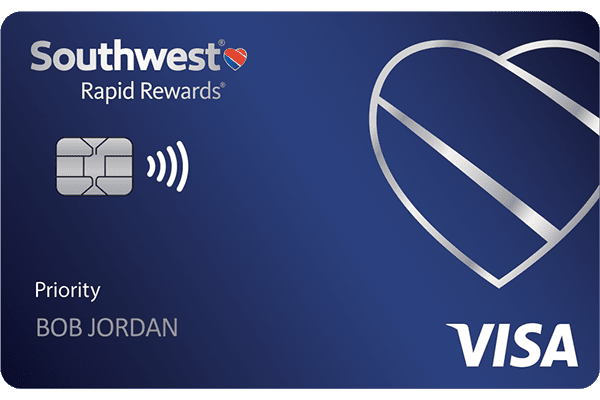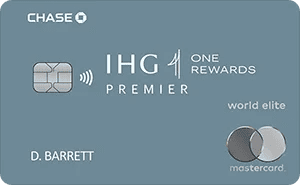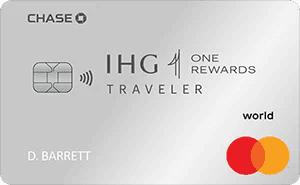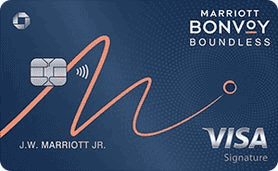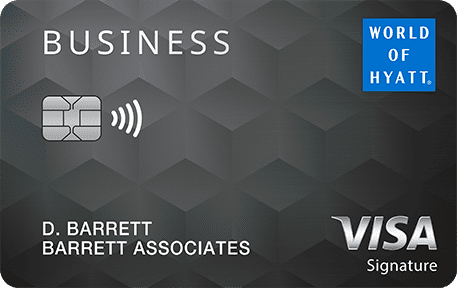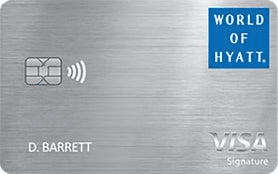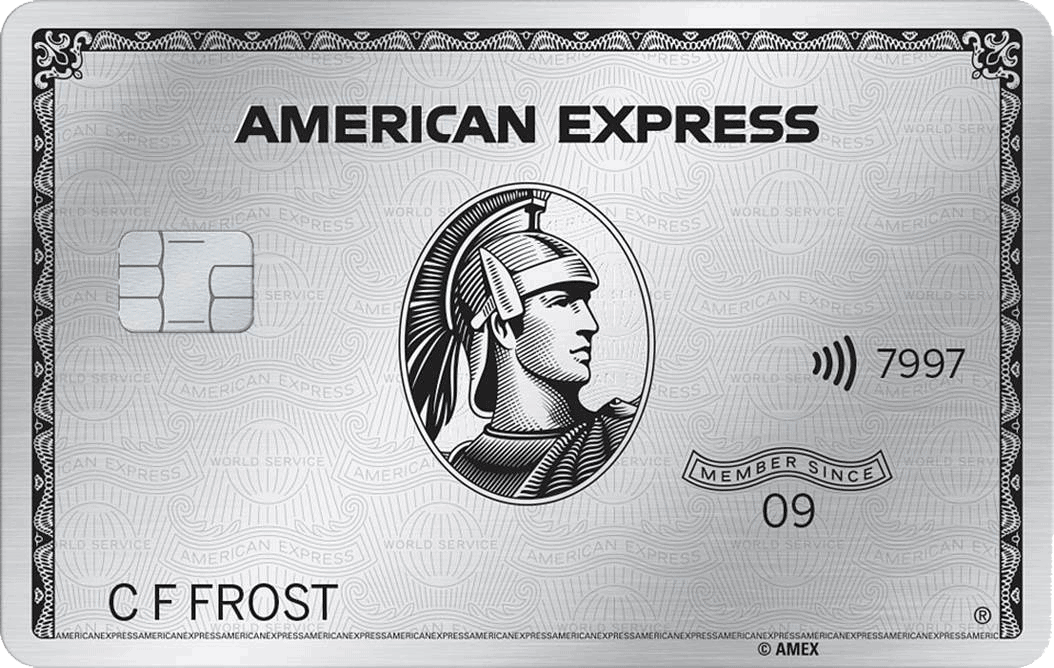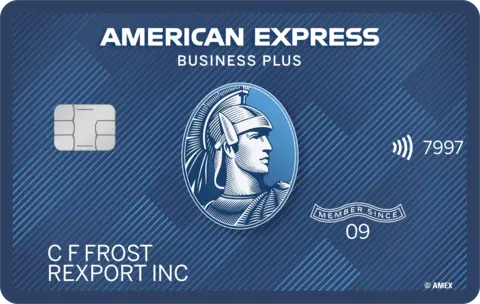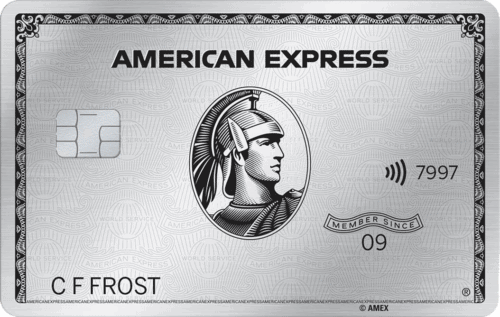
10xTravel is part of an affiliate sales network and receives compensation for sending traffic to partner sites, such as CreditCards.com. This compensation may impact how and where links appear on this site. This site does not include all financial companies or all available financial offers. Terms apply to American Express benefits and offers. Enrollment may be required for select American Express benefits and offers. Visit americanexpress.com to learn more.
The Chase Sapphire Preferred® Card is the best beginner credit card—no ifs, ands or buts.
Lucrative bonus spending categories, including both travel and dining, strong airline and hotel transfer partners, a fixed redemption rate of 1.25 cents per point for Chase Travel℠ redemptions—all for an annual fee of just $95—make it a card that’s hard to beat when it comes to value for money, flexibility and simplicity.
Not to mention, it’s also got a solid welcome offer, typically between 60,000 and 80,000 Ultimate Rewards points, with a reasonable minimum spend that is typically around $4,000 to $5,000.
However, once the excitement of opening the Sapphire Preferred Card and earning its welcome offer has worn off, you might be asking yourself what comes next.
While it isn’t as straightforward as “get this card,” there are some clear questions to ask yourself and strategies to apply to determine what your next steps should be.
Let’s dive in.
Chase Sapphire Preferred® Card
75,000
bonus points
after you spend $5,000 on purchases in the first 3 months from account opening.
Annual Fee: $95

Evaluate Your Points and Travel Goals
Before rushing into the next card application and welcome offer earning period, it’s key to step back and ask yourself three questions:
- What are my travel goals?
- How does my upcoming expenditure look?
- Am I under 5/24?
Earning points blindly can leave you in a position where you have a lot of different points across various programs with no clear direction.
Let’s take a closer look at answering these questions.
What Are Your Travel Goals?
Accumulating Southwest Rapid Rewards points is no good if you want to travel to Bora Bora this summer. However, if you’re hoping to score cheap flights for the whole family to a destination within the United States, earning Rapid Rewards is a solid way to make that happen. Therefore, you need to begin by asking yourself what your travel goals are.
Put simply, once you know where you want to go, you can then begin researching which airlines can get you there as well as which hotels have a presence there.
For example, if Australia is next on your bucket list, you know that you can fly there either nonstop or with a connection with Qantas, American Airlines, United Airlines, Delta Air Lines, Cathay Pacific and All Nippon Airways (ANA). With this knowledge in mind, you now know that you need to focus on earning points that enable you to book flights with one or more of these airlines.
However, keep in mind that you don’t necessarily need to earn points that are directly transferable to these airlines, but rather points that simply enable you to book the most cost-effective fares with these airlines. This distinction is important because you’ll often score better rates and avoid dynamic pricing by booking an award fare with one airline using the frequent-flyer miles of another airline.
For instance, you can book cheap United award fares to Australia through Air Canada Aeroplan, thanks to their joint membership in the Star Alliance. In this case, you’d be focusing on earning points that can be transferred to Aeroplan, not to United MileagePlus.
This is known as a partner award booking and is possible thanks to airline alliances. That said, don’t get hung up on the intricacies of partner award bookings just yet (we’ll cover that later).
What Does Your Upcoming Expenditure Look Like?
Having an overview of your upcoming expenditure enables you to determine two important factors:
- What type of purchases you spend the most on.
- How much your typical monthly expenditure is and if you have any large expenses around the corner.
The first factor enables you to consider which bonus spending categories would be most valuable to you. For instance, if a large chunk of your monthly expenditure goes toward restaurants and grocery shopping, a card that rewards this spending, such as the American Express® Gold Card, would be a wise option for maximizing your rewards.
The second factor enables you to estimate how many points you would earn on average per month from a prospective credit card. It also enables you to prioritize certain cards based on their welcome offers more so than others.
For example, small-business cards tend to have higher minimum spending requirements for their welcome offers—and often more points up for grabs—than consumer cards. So if you know that you have large expenses coming up, applying for a small-business card could be the perfect way to leverage this higher-than-normal expenditure to score you thousands of extra points.
You may be eligible for as high as 100,000
Membership Rewards® Points
after you spend $6,000 in eligible purchases on your new Card in your first 6 months of Card Membership. Welcome offers vary and you may not be eligible for an offer. Apply to know if you’re approved and find out your exact welcome offer amount – all with no credit score impact. If you’re approved and choose to accept the Card, your score may be impacted.
Annual Fee:
$325
Are You Under Your 5/24 Count?
Chase happens to have some of the most lucrative travel rewards cards on the market. It also happens to have a pesty unofficial application rule: the 5/24 rule.
The 5/24 rule stipulates that you’ll be ineligible to open any new credit cards with Chase if you’ve opened five or more credit cards with any issuer in the last 24 months.
So, if you’re under 5/24, that means you should focus on opening other Chase cards before looking to other issuers. However, if you’re at 5/24 or above, then your focus will need to shift to other major card issuers, such as American Express, Capital One and Citibank.

What to Do If You’re Under 5/24
If you’re under 5/24, you’re in luck.
Being under 5/24 means you’re still eligible to open more Chase cards. Given the strict limitations of the 5/24 rule, your primary focus should be on opening more Chase cards.
Let’s look at how to go about your next steps.
Continue Earning Chase Ultimate Rewards Points
Whether or not you’re under 5/24, you’ll want to continue earning Chase Ultimate Rewards points. That can be through your Chase Sapphire Preferred Card as well as through any new Chase credit cards you intend to open.
Ultimate Rewards points are an extremely valuable rewards currency that you can transfer to airlines from all three major alliances as well as to some pretty neat hotel rewards programs. As a Sapphire Preferred cardholder, you also can redeem your points through Chase Travel℠, and as a Chase Sapphire Reserve® cardholder, you can redeem them at an elevated rate.
For this reason, continuing to stock up on Chase Ultimate Rewards points is always a good move because they can come in handy for almost any trip you can imagine.
Earn 100,000
bonus points + $500 Chase Travel℠ promo credit
after you spend $5,000 on purchases in the first 3 months from account opening.
Annual Fee: $795
Familiarize Yourself with Chase Travel℠ and Chase’s Transfer Partners
As you continue to earn Ultimate Rewards points, you’ll want to familiarize yourself with the best ways to redeem them.
Your first option is to check out Chase Travel℠.
Chase Travel℠ is run by Expedia, so think of it as the same thing as an online travel agency. The only difference is that rather than having to pay cash, you can redeem your points for part or all of your trip. If you redeem your points this way, your points will be worth a fixed value.
This means, with your recent welcome offer of 80,000 Chase Ultimate Rewards, you can redeem them for $1,000 worth of travel. If your trip costs more, you can use your card to cover the difference and earn points on the remaining amount spent. As an added bonus, if you’re paying for the remainder of your trip, you’ll earn 5X points for every extra dollar you spend on travel through Chase Travel℠.
Your second option—and often the more lucrative option—is to transfer your Ultimate Rewards points to Chase’s airline and hotel partners. Chase boasts 11 airline and three hotel transfer partners to which you can transfer your Ultimate Rewards points at a 1:1 ratio, which are:
- Aer Lingus AerClub
- Air Canada Aeroplan
- Air France-KLM Flying Blue
- British Airways Executive Club
- Emirates Skywards
- Iberia Plus
- IHG One Rewards
- JetBlue TrueBlue
- Marriott Bonvoy
- Singapore Airlines KrisFlyer
- Southwest Airlines Rapid Rewards
- United MileagePlus
- Virgin Atlantic Flying Club
- World of Hyatt
Needless to say, there are a multitude of ways you can leverage Chase’s transfer partners to score outsized value for your points. You also can take advantage of partner award bookings to score even more value for your points. For some inspiration, check out our best ways articles to see how to redeem your points for award travel and leverage transfer partners in the process.
Consider Opening a Chase Small-Business Credit Card
One of the first options to consider is opening a small-business credit card with Chase—either as your second card or after opening a Chase Freedom card.
You might be thinking, “But I don’t have a small business!” However, you may be surprised to know that even the smallest of side hustles can help you qualify for a business credit card.
Card issuers use a broad definition of small-business owner to include any type of self-employment from running a physical business with employees on payroll to contracting and even gig economy work. That means your small side hustle as a tutor, blog writer, lawn mower or even dog walker could help you qualify for a small business credit card.
When it comes to Chase’s business credit cards, you have the following four to choose from:
- Ink Business Preferred® Credit Card
- Ink Business Unlimited® Credit Card
- Ink Business Cash® Credit Card
- Ink Business Premier® Credit Card
The Ink Business Preferred Credit Card is the only card of the four to earn fully transferable Ultimate Rewards points. It also comes with a lucrative welcome offer, typically between 90,000 and 120,000 Ultimate Rewards points. That’s worth at least $1,125 to $1,500 when redeemed through Chase Travel℠.
If you have some large expenses coming up, the Ink Business Preferred can be an excellent card to apply for. It has a slightly higher minimum spending requirement of $8,000 within the first three months of card membership, enabling you to put your large expenses to good use in earning its welcome offer.
Its points are fully transferable to all of Chase’s airline and hotel partners, and they can also be redeemed for 1.25 cents apiece through Chase Travel℠.
The best part is that while your 5/24 count will be considered during your application, Chase business credit cards (and business credit cards from many other issuers) won’t add to your 5/24 count once you’re approved because they’re on your business credit report instead of your personal credit report.
That means if you open a Chase business card while you’re under 5/24, you could technically apply for more than five Chase cards within two years, enabling you to maximize welcome offer opportunities as well as remain flexible.
Chase Ink Business Preferred® Credit Card
90,000
bonus points
after you spend $8,000 on purchases in the first 3 months after account opening.
Annual Fee: $95
Chase Ink Business Unlimited® Credit Card
Earn $750
bonus cash back
after you spend $6,000 on purchases in the first 3 months from account opening
Chase Ink Business Cash® Credit Card
Earn $350
bonus cash back when you spend $3,000 on purchases
in the first three months and additional $400 when you spend $6,000 on purchases in the first six months after account opening
Consider Opening a Chase Freedom Card
Opening a Chase Freedom card can be a smart move in your points-earning strategy. The Chase Freedom Flex® Credit Card and the Chase Freedom Unlimited® Credit Card are two $0 annual fee cards that offer strong bonus spending categories.
The Chase Freedom Unlimited offers the following bonus spending categories:
- 5% cash back on travel booked through Chase Travel℠
- 3% on dining, inclusive of eligible takeout and delivery services, as well as dining at restaurants
- 3% on drugstore purchases
- 1.5% on all other purchases
And the Chase Freedom Flex offers these bonus spending categories:
- 5% cash back on combined purchases totaling up to $1,500 in bonus categories each quarter you activate the bonus (1% thereafter)
- 5% on travel purchased through Chase Travel℠
- 3% on dining, inclusive of takeout and eligible delivery services, as well as dining at restaurants
- 3% on drugstore purchases
- 1% on all other purchases
Adding one of these cards to your wallet enables you to diversify the categories you earn bonus points on.
However, the key selling point of a Chase Freedom card is the ability to transfer points earned on your Freedom card to your Chase Sapphire Preferred Card (or the Chase Sapphire Reserve® or the Ink Business Preferred® Credit Card, for that matter). While Chase Freedom cards are marketed as cashback cards, they technically earn a limited form of Ultimate Rewards points.
By transferring your points to your Chase Sapphire Preferred Card, they become full-fledged Ultimate Rewards points that you can either redeem through Chase Travel℠ at 1.25 cents apiece or transfer to any of Chase’s airline and hotel partners.
So if you spent $1,500 per quarter in the Freedom Flex’s 5% category, you could either redeem your rewards for $300 worth of cash back or transfer your rewards to your Sapphire Preferred Card to redeem for $375 through Chase Travel℠ or transfer to airline and hotel partners for even greater value.
This is the power of a Chase cashback card strategy, which can help you boost your Ultimate Rewards points earnings.
$200
Bonus
after you spend $500 on purchases in your first 3 months from account opening
$200
Bonus
after you spend $500 on purchases in your first 3 months from account opening
Consider the Value of a Co-Branded Chase Airline or Hotel Card
While we generally recommend to focus on credit cards that earn transferable points, particularly in the beginning of your points and miles journey, there is a time and a place for co-branded hotel and airline credit cards.
It just so happens that Chase offers some of the most lucrative co-branded hotel and airline credit cards, in partnership with companies such as United Airlines, Southwest Airlines, IHG One Rewards, Marriott Bonvoy and World of Hyatt.
Here are some instances where it could make sense to apply for a co-branded credit card. However, do keep in mind that Chase Ultimate Rewards points transfer to all of its co-branded card partners at a 1:1 ratio, so you shouldn’t necessarily apply for a co-branded card simply to earn points with the specific loyalty program.
Earn a Southwest Companion Pass
Perhaps the No. 1 argument for opening co-branded Chase cards would be part of a larger strategy to earn Southwest Airlines’ coveted Companion Pass.
As a Southwest Companion Pass holder, you can fly your nominated companion for just $5.60 in taxes and fees each way (these are higher on Mexican and Caribbean routes) during its validity period. The Companion Pass has unlimited usage with no blackout dates, meaning if you and your companion want to fly to Hawaii and back 100 times, that would cost your companion just $1,120 in total out of pocket.
The Southwest Companion Pass is valid for the remainder of the calendar year you earn it plus the entire following calendar year. That means if you earn it early in the year, you could get almost two years worth of use out of it.
If your travel goals focus around domestic adventures and U.S. cities that Southwest operates flights to and from, earning a Companion Pass is a great way of reducing your medium-term travel costs. Likewise, if you’re a family of four, having each parent earn a Southwest Companion Pass would enable each kid to be nominated as a companion, cutting the cost of family air travel in half.
To earn the Southwest Companion Pass, you need to earn 135,000 Rapid Rewards points within a calendar year (or fly with Southwest 100 times in a calendar year). The most effective way to go about this is by opening either one Southwest personal and one Southwest business credit card or two Southwest business credit cards (due to eligibility restrictions).
Chase offers the following co-branded Southwest credit cards:
- Southwest Rapid Rewards® Performance Business Credit Card
- Southwest Rapid Rewards® Plus Credit Card
- Southwest Rapid Rewards® Premier Business Credit Card
- Southwest Rapid Rewards® Premier Credit Card
- Southwest Rapid Rewards® Priority Credit Card
You can typically earn between 80,000 and 120,000 Rapid Rewards points from two Southwest credit card welcome offers alone, meaning you’ll need to make up the remaining points deficit through spending and/or flying with Southwest. Just make sure that all qualifying spend happens after Jan. 1, otherwise your Companion Pass points balance is effectively reset.
If your travel goals for the next few years feature U.S. destinations or perhaps some Caribbean islands, it might well be worth focusing on Chase’s range of co-branded Southwest personal and business credit cards.
Southwest® Rapid Rewards® Performance Business Credit Card
80,000
bonus points
after you spend $5,000 on purchases in the first 3 months from account opening.
Annual Fee: $199
Southwest Rapid Rewards® Plus Credit Card
50,000
Bonus Points
after you spend $1,000 on purchases in the first 3 months from account opening.
Annual Fee: $69
Southwest® Rapid Rewards® Premier Business Credit Card
60,000
bonus points
after you spend $3,000 on purchases in the first 3 months from account opening.
Annual Fee: $99
Southwest Rapid Rewards® Priority Credit Card
50,000
Bonus Points
after spending $1,000 on purchases in the first 3 month from account opening
Annual Fee: $149
Receive Exclusive Hotel and Airline Benefits
As already mentioned, it’s generally best to focus on earning transferable points given their unmatched flexibility when redemption time comes.
However, if you want access to exclusive benefits with a specific hotel chain or airline and you use the respective hotel or airline enough to justify holding a card for this purpose, it might be worth applying for one of Chase’s co-branded airline or hotel cards.
Chase offers the following co-branded hotel credit cards:
IHG One Rewards Premier Business Credit Card
Earn 140,000
Bonus Points
after spending $4,000 on purchases in the first 3 months from account opening
Annual Fee: $99
IHG One Rewards Premier Credit Card
Earn 5
Free Nights.
after spending $5,000 on purchases in the first 3 months from account opening.
Annual Fee: $99
IHG One Rewards Traveler Credit Card
Earn 120,000
Bonus Points
after spending $2,000 on purchases within the first 3 months of account opening.
Marriott Bonvoy Bold® Credit Card
Earn 60,000
Bonus Points plus 1 Free Night Award
after spending $2,000 on purchases in the first 3 months from account opening. Free Night Award valued up to 50,000 points. Certain hotels have resort fees.
Marriott Bonvoy Boundless® Credit Card
Earn 5 Free Night Awards
(each night valued up to 50,000 points) after spending $5,000 on eligible purchases within 3 months of account opening. Certain hotels have resort fees.
Annual Fee: $95
World of Hyatt Business Credit Card
60,000
Bonus Points
after you spend $5,000 on purchases in your first 3 months from account opening
Annual Fee: $199
The World of Hyatt Credit Card
Earn up to 60,000
Bonus Points
Earn 30,000 Bonus Points after you spend $3,000 on purchases in your first 3 months from account opening. Plus, up to 30,000 more Bonus Points by earning 2 Bonus Points total per $1 spent in the first 6 months from account opening on purchases that normally earn 1 Bonus Point, on up to $15,000 spent.
Annual Fee: $95
Excluding Southwest credit cards, Chase also offers the following co-branded airline credit cards:
- Aer Lingus Visa Signature® Credit Card
- Aeroplan® Credit Card
- British Airways Visa Signature® Credit Card
- Iberia Visa Signature® Credit Card
- The New United Club℠ Business Card
- The New United Club℠ Card
- The New United Gateway℠ Card
- The New United Quest℠ Card
- The New United℠ Business Card
- The New United℠ Explorer Card
75,000
bonus points
after you spend $4,000 on purchases in the first 3 months your account is open.
Annual Fee: $95
Limited-Time Offer: Earn 90,000
Bonus Miles
after you spend $5,000 on purchases in the first 3 months from account opening.
Annual Fee: $695
Earn 75,000
Bonus Miles
and 2,000 PQP after you spend $5,000 on purchases in the first 3 months your account is open.
Annual Fee: $0 for your first year, then $150.
Limited-Time Offer: Earn 60,000
Bonus Miles
after you spend $3,000 on purchases in the first 3 months your account is open.
Annual Fee: $0 for your first year, then $150.
Not all of these cards will offer you value—in fact, most of them won’t, compared to simply earning Ultimate Rewards points. However, if you’re at least a semi-frequent flyer with United Airlines or stay with Marriott, Hyatt or IHG fairly regularly, some of these cards may be beneficial to your wider travel strategy.
For example, as a United Club Card holder, you’ll receive complimentary United Club membership (worth $750+ per year), free first and second checked bags for you and one companion (offerings savings of $360 per round-trip journey) and a slew of other United-related benefits for an annual fee of $695. If you fly frequently with United, this card could help you save a significant amount on checked baggage fees as well as allow you to enjoy some pre-flight lounge amenities.
Similarly, Marriott Bonvoy Bountiful Credit Card holders can receive a free night award every calendar year valid for a one night hotel stay at a property with a redemption level of up to 50,000 points after spending $15,000 on the card. You’ll also receive complimentary Gold Elite status with a fast track to Platinum status. For the semi-frequent Marriott guest, this card could be worth considering.
Overall, while transferable points-earning cards typically offer better value and greater redemption flexibility, it’s still worth considering if you could maximize the perks offered by a Chase co-branded airline or hotel credit card, particularly while you’re still under 5/24.

What to Do If You’re Over 5/24
If you happen to be over 5/24, not to worry.
You can turn your focus to other card issuers that offer the opportunity to earn flexible and fully transferable rewards points—namely, American Express, Capital One and Citi.
Consider Opening an American Express Card
Next to Chase, American Express is considered another powerhouse in the points and miles world. It doesn’t mean that other banks are less valuable; it’s just that Amex tends to offer a wide variety of redemption opportunities in terms of transfer partners and the value of Amex points tends to be quite high.
There’s a number of personal and business Amex cards that earn Membership Rewards points and plenty to keep you going for the next few months (or even years), depending on where you’re at in your points and miles journey.
Some favorite Amex cards include the American Express® Gold Card (see rates and fees), which earns 4X points on groceries at U.S. supermarkets on up to $25,000 in spending per calendar year (1X points thereafter) and 4X points on worldwide restaurant spending, including U.S. takeout and delivery on up to $50,000 in spending per calendar year (1X points thereafter).
Likewise, for a $695 annual fee (see rates and fees), The Platinum Card® from American Express offers $1,500 worth of cardholder perks, including access to the American Express Global Lounge Collection for eligible card members, TSA PreCheck or Global Entry enrollment fee credits, and complimentary Gold Elite status with Marriott Bonvoy and Hilton Honors (enrollment required).
Alternatively, if simplicity is your go-to, the Blue Business® Plus Card from American Express (see rates and fees) earns 2X Membership Rewards points on all spending, on up to $50,000 in spending per calendar year (1X points thereafter).
American Express has up to 20 hotel and airline transfer partners, including all three major alliances plus lucrative frequent-flyer programs, such as ANA Mileage Club.
So if you’re at or over 5/24, consider Amex as your next card issuer.
The Platinum Card® from American Express
You may be eligible for as high as 175,000
Membership Rewards® Points
after you spend $8,000 in eligible purchases on your new Card in your first 6 months of Card Membership. Welcome offers vary and you may not be eligible for an offer. Apply to know if you’re approved and find out your exact welcome offer amount – all with no credit score impact. If you’re approved and choose to accept the Card, your score may be impacted.
Annual Fee:
$695
The Blue Business® Plus Credit Card from American Express
15,000
Membership Rewards®
after you spend $3,000 in eligible purchases on the Card within your first 3 months of Card Membership
Consider Opening a Capital One Card
Capital One has grown to prominence in the last decade with its own range of premium travel rewards credit cards and even airport lounges.
Capital One boasts 15+ transfer partners, opening up lucrative opportunities to score great value for your Capital One Miles.
The Capital One Venture X Rewards Credit Card and the Capital One Venture Rewards Credit Card offer some of the best rates and perks for annual fees of $395 and $95, respectively.
Both cards earn a baseline rewards rate of 2X miles per dollar spent, while the Venture X offers complimentary Capital One Lounge, Plaza Premium Group and Priority Pass Select™ lounge access—at a much lower annual fee compared to other card issuers.
Adding a Capital One card to your wallet can help diversify your points and transfer partners, making it an asset come redemption time.
Capital One Venture X Rewards Credit Card
75,000
Venture Miles
after you spend $4,000 in purchases in the first 3 months.
Annual Fee: $395
Capital One Venture Rewards Credit Card
75,000
miles
once you spend $4,000 on purchases within 3 months from account opening, equal to $750 in travel.
Annual Fee: $95
Consider Opening a Citibank Card
Citi is another strong contender to consider.
While Citi doesn’t boast as many cards as Chase or American Express, it offers lucrative welcome offers, a long list of airline and hotel transfer partners, and bonus spending categories that enable you to earn Citi ThankYou Points on your everyday spending.
For instance, for $95 per year, the Citi Strata Premier® Card earns:
- 10X points on hotels, car rentals and attractions booked through CitiTravel.com
- 3X points air travel and other hotel purchases, restaurants, supermarkets, gas stations and EV charging stations
- 1X points on all other purchases
If you’re waiting for your 5/24 count to cool off, a Citi travel rewards card could be a great asset to enable you to continue earning a stock of transferable points.
Book Your First Award Trip
With all the spending, earning and decision making, it can be easy to forget why you started this journey in the first place. However, it’s important to actually pull the trigger and make your first award booking.
Whether that’s award flights plus an award stay or just one of these combined with a cash booking, it’s essential to practice doing award searches, transferring points and seeing all of your hard work come together.
If you’re feeling a bit nervous about booking your first award trip, you can always get help from the 10xTravel award booking service to ensure you get the greatest value out of your points. This can be particularly helpful if you’re booking complex itineraries involving multiple people.
Learn and Earn: The Journey to Points and Miles Mastery
It’s natural to wonder what comes after earning the welcome offer on your Chase Sapphire Preferred Card. And the truth is, there’s no single path to follow.
Think about your travel goals, analyze your upcoming expenditure and consider whether you’re still eligible for new Chase credit cards. Focus primarily on transferable point-earning cards but don’t neglect co-branded cards outright if they fit in with your wider travel strategy and goals.
Continue to earn, learn and pay off your credit balance on time before its due date. Oh, and don’t forget to actually use your points and miles to make your travel dreams come true (at a fraction of the cost).
New to the world of points and miles? The Chase Sapphire Preferred® Card is the best card to start with.
With a bonus of 75,000 bonus points after you spend $5,000 on purchases in the first 3 months from account opening. , 5x points on travel booked through Chase Travel℠ and 3x points on restaurants, streaming services, and online groceries (excluding Target, Walmart, and wholesale clubs), this card truly cannot be beat for getting started!
after you spend $5,000 on purchases in the first 3 months from account opening.
after you spend $5,000 on purchases in the first 3 months from account opening.
after you spend $500 on purchases in your first 3 months from account opening
after you spend $500 on purchases in your first 3 months from account opening
after you spend $8,000 on purchases in the first 3 months after account opening.
after you spend $6,000 on purchases in the first 3 months from account opening
in the first three months and additional $400 when you spend $6,000 on purchases in the first six months after account opening
after you spend $6,000 in eligible purchases on your new Card in your first 6 months of Card Membership. Welcome offers vary and you may not be eligible for an offer. Apply to know if you’re approved and find out your exact welcome offer amount – all with no credit score impact. If you’re approved and choose to accept the Card, your score may be impacted.
after you spend $8,000 in eligible purchases on your new Card in your first 6 months of Card Membership. Welcome offers vary and you may not be eligible for an offer. Apply to know if you’re approved and find out your exact welcome offer amount – all with no credit score impact. If you’re approved and choose to accept the Card, your score may be impacted.
after you spend $3,000 in eligible purchases on the Card within your first 3 months of Card Membership
after you spend $4,000 in purchases in the first 3 months.
once you spend $4,000 on purchases within 3 months from account opening, equal to $750 in travel.
after you spend $4,000 on purchases in the first 3 months your account is open.
after you spend $5,000 on purchases in the first 3 months from account opening.
after you spend $3,000 on purchases in the first 3 months from account opening.
after spending $4,000 on purchases in the first 3 months from account opening
after spending $5,000 on purchases in the first 3 months from account opening.
after spending $2,000 on purchases within the first 3 months of account opening.
after spending $2,000 on purchases in the first 3 months from account opening. Free Night Award valued up to 50,000 points. Certain hotels have resort fees.
(each night valued up to 50,000 points) after spending $5,000 on eligible purchases within 3 months of account opening. Certain hotels have resort fees.
after you spend $5,000 on purchases in your first 3 months from account opening
Earn 30,000 Bonus Points after you spend $3,000 on purchases in your first 3 months from account opening. Plus, up to 30,000 more Bonus Points by earning 2 Bonus Points total per $1 spent in the first 6 months from account opening on purchases that normally earn 1 Bonus Point, on up to $15,000 spent.
after you spend $5,000 on purchases in the first 3 months from account opening.
and 2,000 PQP after you spend $5,000 on purchases in the first 3 months your account is open.
after you spend $3,000 on purchases in the first 3 months your account is open.
Editors Note: Opinions expressed here are author’s alone, not those of any bank, credit card issuer, hotel, airline, or other entity. This content has not been reviewed, approved or otherwise endorsed by any of the entities included within the post.






